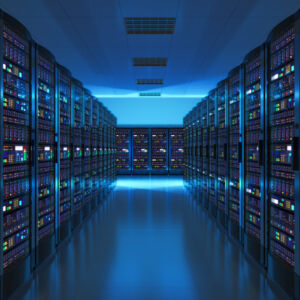The explosive growth in data centers nationwide underscores the skyrocketing demand for cloud computing power transforming the economy while also sparking big worries about the electricity required to keep the data centers humming.
The additional computing power is necessary to propel emerging and maturing technologies such as artificial intelligence, machine learning, cryptocurrency, the Internet of Things, and the ever-growing demands for e-commerce, content streaming, and cloud computing. Their ability to benefit millions of Americans across nearly all parts of the economy depends on acres of data centers that require vast amounts of electricity to keep the stacks of computers powered and climate-controlled.
From the five main data center hubs in the United States — northern Virginia, Phoenix, Chicago, Dallas and San Francisco — to many areas vying to join their ranks, the growth is causing concern about the rise in anticipated power needs.
A recent analysis by the Newmark Group, commercial property industry analysts, predicts that power consumption from data centers will more than double by 2030. Growth in energy demand will disproportionately affect the United States, the world’s data center.
The environmental effect of the expected growth in electricity demand is a top concern, with the International Energy Agency estimating that data centers and their data transmission networks are already responsible for 1 percent of the world’s energy-related greenhouse gas emissions. Meanwhile, the United States is experiencing significant growth in other types of commercial buildings. While those buildings don’t draw as much electricity per square foot as data centers, they nonetheless are large users of energy and a meaningful source of carbon emissions.
Can data center energy use and related environmental impact be mitigated?
One of the answers is a stepped-up push for power generation from renewable sources to curtail electricity generated by fossil fuel that creates carbon emissions.
Amazon, Microsoft, Meta and Google, whose products and services generate much of the need for data centers, have made major strides as the globe’s four largest purchasers of corporate renewable energy agreements. These companies have contracted for almost 50GW to date for power generated by renewables such as solar and wind turbines, “equal to the generation capacity of Sweden,” the International Energy Agency says.
To contain emissions while providing more energy, data center operator Standard Power announced last year that it was seeking to use small modular nuclear reactors to power data centers in Ohio and Pennsylvania. Nuclear reactors don’t produce carbon emissions.
Technology can also provide major assistance for cooling data centers. Cooling is key because it accounts for up to 40 percent of energy usage at data centers. It’s a reason some companies are engineering specialized systems for data center ceilings that dramatically lower the energy required for cooling. It’s also a reason the Department of Energy last year provided $40 million to seed 15 research projects with industry and research universities aimed at developing high-performance, energy-efficient approaches for cooling data centers.
What’s more, pursuing energy efficiency and lowering carbon footprints in new commercial buildings and retrofitting existing ones can help alleviate some of the strain on electrical grids.
The economic benefits of advancements like artificial intelligence and cloud computing need not come at the expense of the environment. A combination of judicious policymaking and innovation in power generation and cooling systems can provide a firm — and climate-friendly — foundation for data center growth and the new economy unfolding around us.


